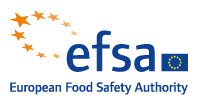OECD/EFSA Workshop on Developmental Neurotoxicity (DNT): the use of non-animal test methods for regulatory purposes


Background
The consequences of chemical exposure can be specific for the developing nervous system or be more pronounced and prolonged (or even permanent) compared to the adult nervous system. This is due to a number of fundamental differences, including:
- The proper development of the nervous system depends on the precise timing of a wide variety of interdependent development processes. Disturbance of such timing can result in permanent alterations in the structure and/or function of the brain.
- There are biological processes that occur during neurodevelopment that do not occur at all, or to a much smaller extent, in the developed organ. They comprise stem cell proliferation, cellular differentiation and migration, and cellular maturation (e.g., extensive neurite growth). Thus, a wide variety of developmental processes occur that may be targets for xenobiotic stressors, many of which are specific to the developing brain.
- Several parameters related with absorption, distribution, metabolism and excretion (ADME) distinguish the developing brain from the adult brain. These comprise the function of the blood–brain barrier (BBB) and metabolic capacities of various cell types. Thus, active site toxicant concentrations may differ.
Developmental neurotoxicity (DNT) has been regarded as an area in need of methods development, as well as use in regulatory decisions, with a critical need for time- and cost- efficient predictive in vitro testing methods. A series of workshops held over the past decade have fostered the development of in vitro assays that assess the impact of chemicals on cellular processes critical to normal brain development, including: neural proliferation, differentiation, migration, neurite outgrowth, synaptogenesis, and neural activity (CAAT DNT workshops and ISTNET workshop). Many of these assays have been used to derive mechanistic information for limited numbers of chemicals. Only a few have been used to screen large numbers of chemicals.
These datasets and the mechanistic information that derive from in vitro DNT assays can be used to address two specific regulatory needs:
- The first is the use of DNT in vitro data for inclusion in weight of evidence (WoE) or integrated approaches to testing and assessment (IATA) approaches for chemical-specific assessments.
- The second is a need for prioritization (for further testing) of thousands of chemicals used in commerce for which there is no data at all on their potential to cause DNT.
Both of these needs require the development and use of a battery of DNT in vitro assays (and possible inclusion of alternative species). However, this battery must be designed in a fit for purpose manner for the above two different requirements. This means, for example, that use of the battery for screening and prioritization purposes may necessitate a broader acceptance of uncertainty in the assays and resulting data compared to use in chemical specific assessments. The latter will require a higher degree of validation due to regulatory decisions that may restrict chemical production and use, while the former will only suggest that further testing may be required. Thus, as development of the battery proceeds, the use of the assays, and the state of their validation may vary depending on problem formulation, i.e. screening purposes versus hazard identification and risk assessment.
To accelerate the development and facilitate regulatory use of such tools, a workshop is co-organized by EFSA and the OECD.
Objectives of the meeting
- Develop consensus on which testing battery of alternative DNT methods could be applied right now and used in a fit for purpose manner for each of the following:
- Chemical screening for prioritization, or
- Hazard identification for specific chemical risk assessment
- Depending on the level of readiness of the alternative test methods, identify what next steps are needed to encourage the regulatory use of the alternative methods (e.g. more precise test method description; better definition of limitations and applicability domain; frameworks for defining “fit for purpose”; Test Guideline Development) either individually or in combination.
- Outline what could become an integrated approach to testing and assessment (IATA) for the purposes for screening and prioritization or for hazard assessment.